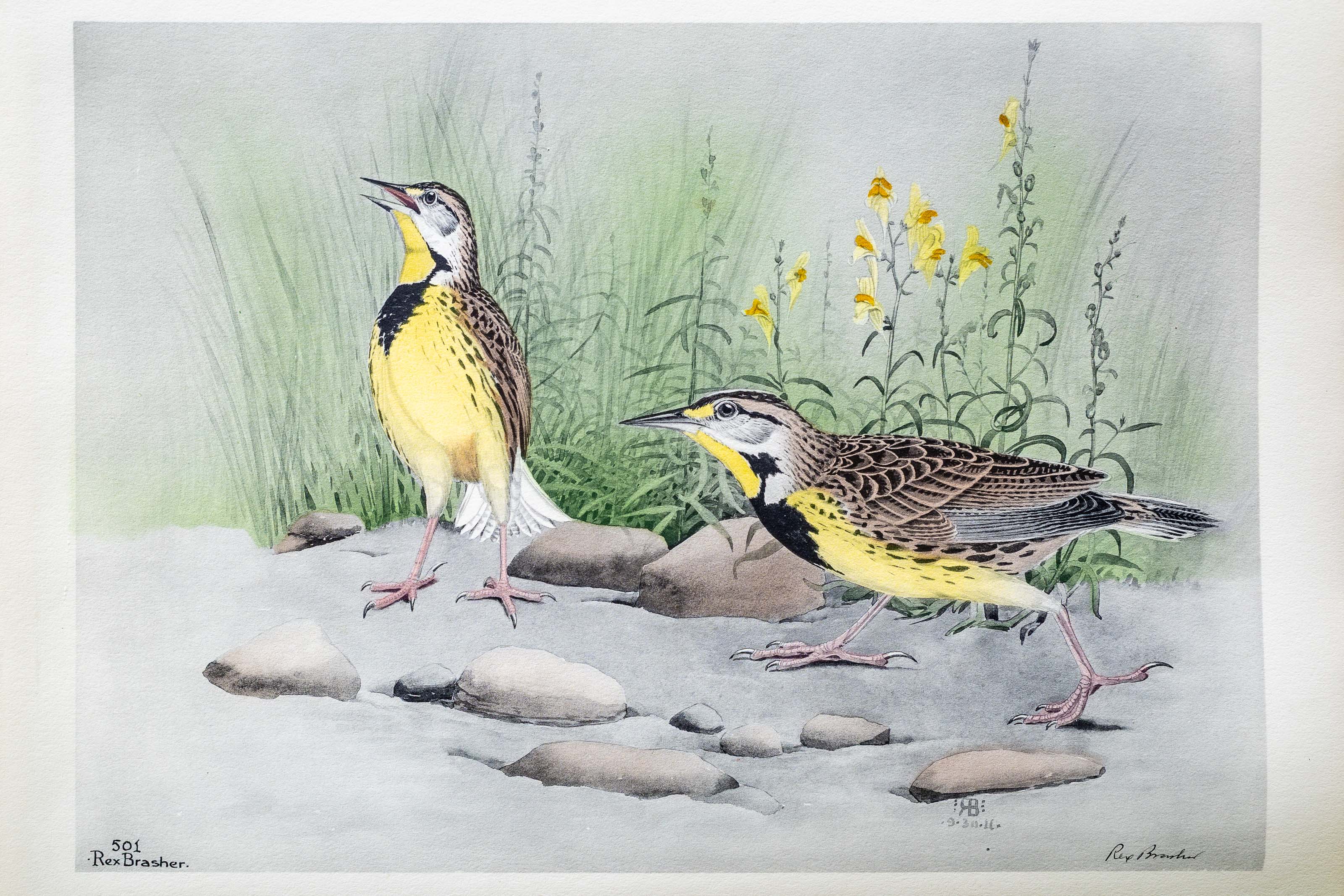
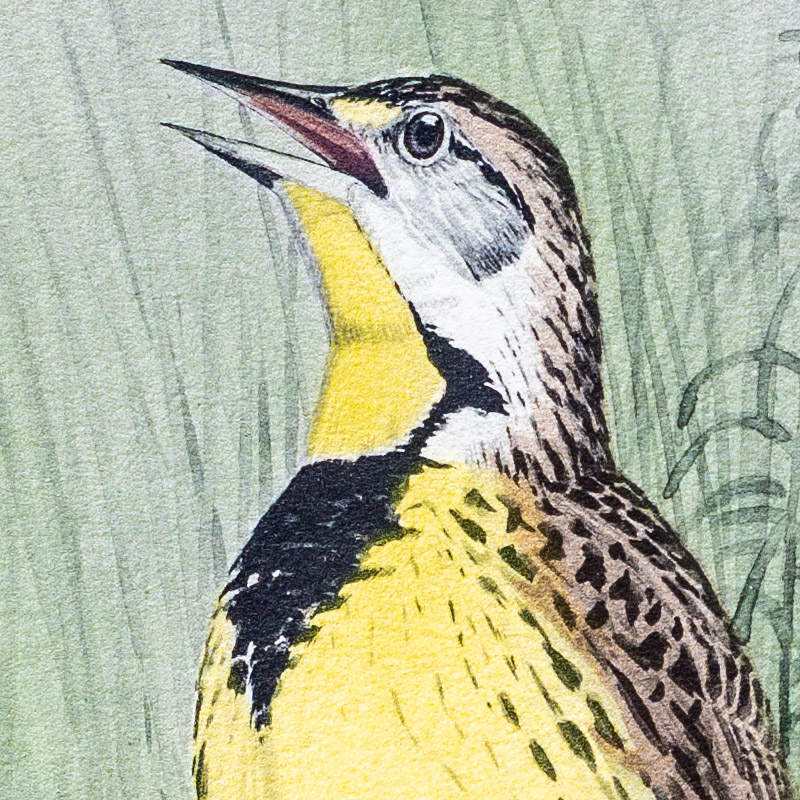
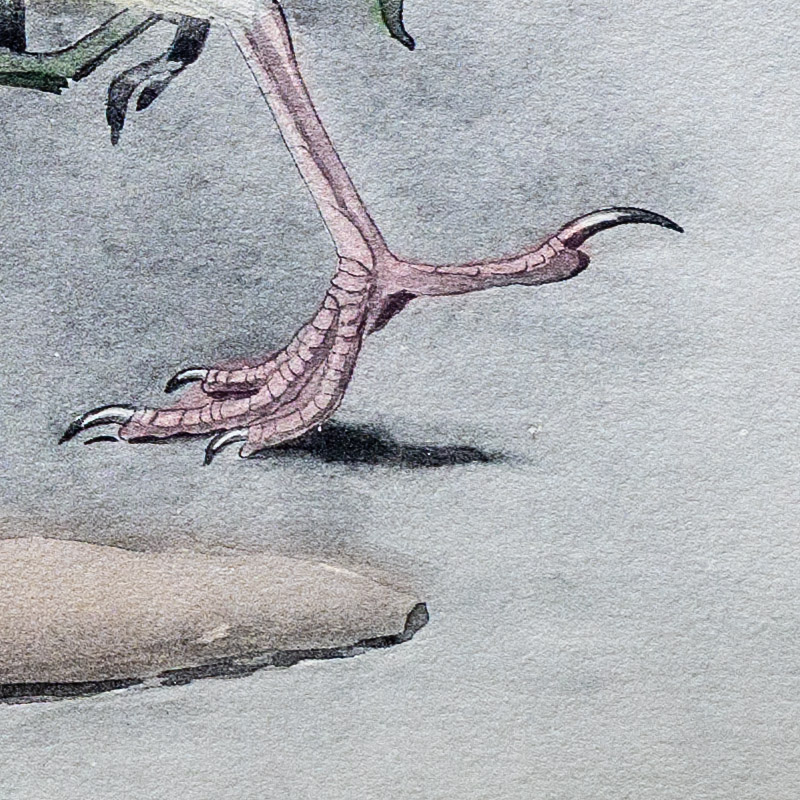

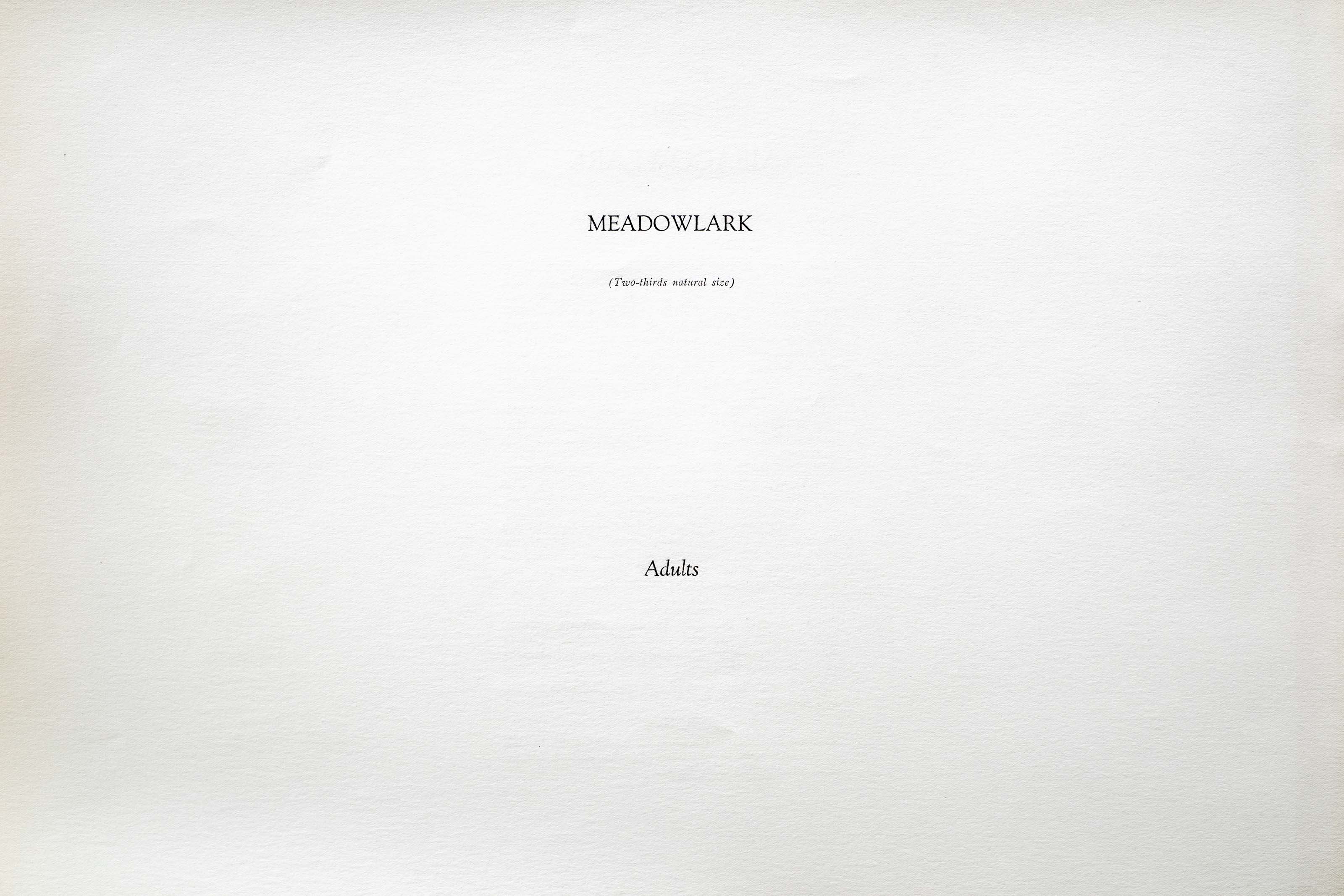
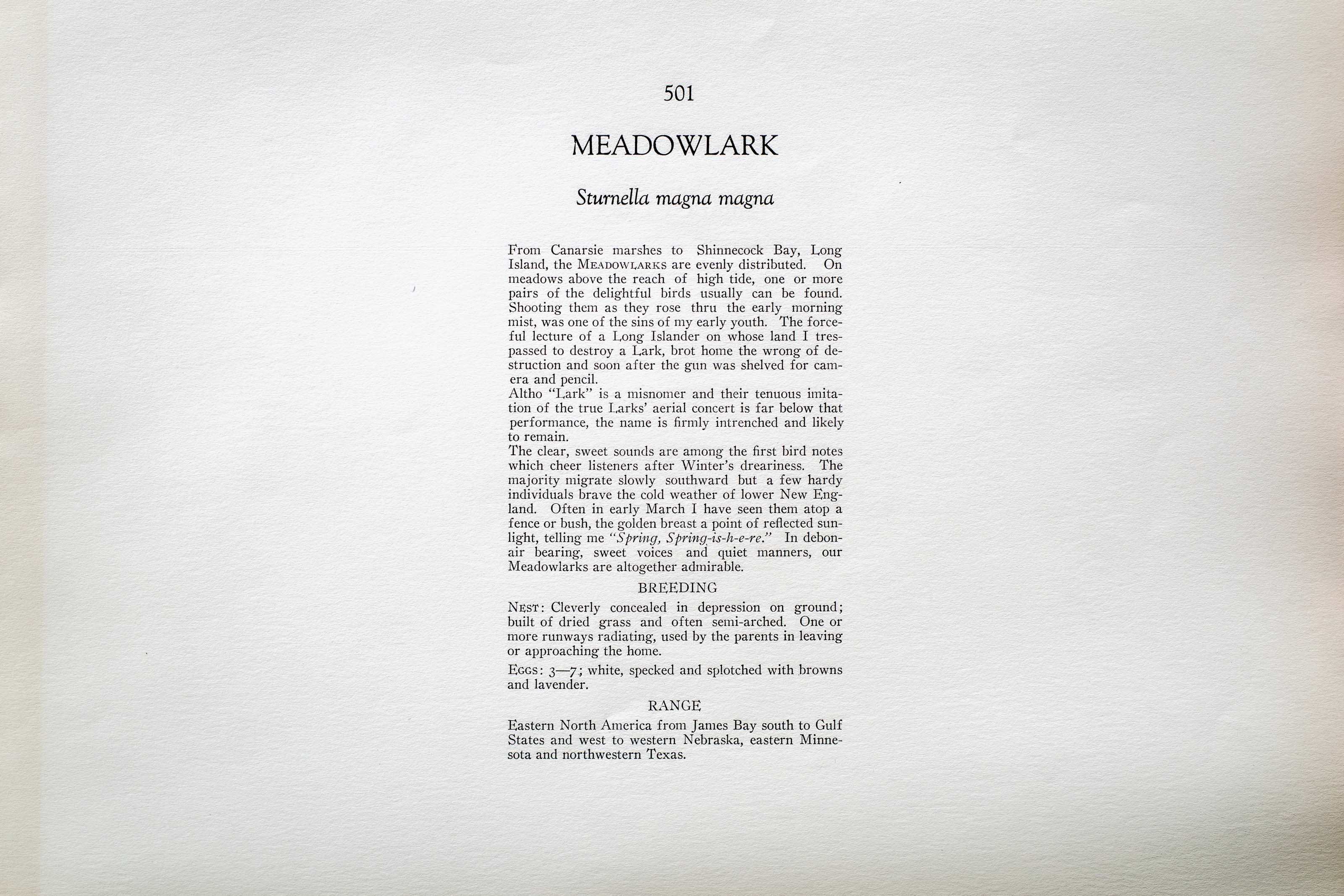

1911
1931
8
501
A team of dedicated board members, volunteers, and student interns has published every page in Volume 9. This volume includes 360 images of paintings and lyrical descriptions of birds, now available online for everyone to enjoy anywhere in the world. This is a monumental task. Each volume requires approximately 400 hours to photograph, edit, transcribe, catalog, and publish online. We need your support to complete this work.
If you're tech-savvy, have a good eye, are meticulous with details, and love structured data, please consider volunteering by emailing us at hello@rexbrasher.org.
We encourage all bird lovers and supporters to consider a monetary donation to support our mission to make Rex's work available for everyone. You can provide a one-time or recurring donation online.
From Canarsie marshes to Shinnecock Bay, Long Island, the MEADOWLARKS are evenly distributed. On meadows above the reach of high tide, one or more pairs of the delightful birds usually can be found. Shooting them as they rose thru the early morning mist, was one of the sins of my early youth. The forceful lecture of a Long Islander on whose land I trespassed to destroy a Lark, brot home the wrong of destruction and soon after the gun was shelved for camera and pencil.
Altho "Lark" is a misnomer and their tenuous imitation of the true Larks' aerial concert is far below that performance, the name is firmly intrenched and likely to remain.
The clear, sweet sounds are among the first bird notes which cheer listeners after Winter's dreariness. The majority migrate slowly southward but a few hardy individuals brave the cold weather of lower New England. Often in early March I have seen them atop a fence or bush, the golden breast a point of reflected sunlight, telling me "Spring, Spring-is-h-e-re." In debonair bearing, sweet voices and quiet manners, our Meadowlarks are altogether admirable.
NEST: Cleverly concealed in depression on ground; built of dried grass and often semi-arched. One or more runways radiating, used by the parents in leaving or approaching the home.
EGGS: 3–7; white, specked and splotched with browns and lavender.
Eastern North America from James Bay south to Gulf States and west to western Nebraska, eastern Minnesota and northwestern Texas.